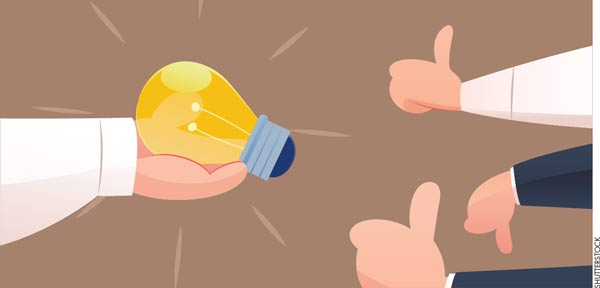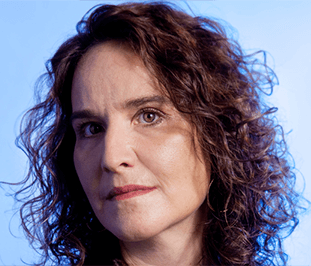Imbalance of power
What do our customers want? That’s a very sound and sensible marketing question – one we’re all used to answering, through whatever means we have at our disposal: focus groups, depth interviews, video diaries, online surveys, sales analysis, staff feedback and good old empirical observation.
What do our customers definitely not want? As marketers, we’re a little less practised at delving into that one, since our discipline inclines us to positivity. And yet isn’t it equally important to know what turns people off as what draws them in?
No. It is not equally important. It is far more important. To see why, you need to first reflect that behaviour is driven by emotions. Increasingly, behavioural science is showing that rationality is more like a PR function than a command centre, with a brief to make some kind of narrative sense of decisions already taken at the subconscious level.
The number of distinct emotions in the human palette – the ones recognisable through facial expressions in every culture – is seven. How many are negative? Five: anger, fear, sadness, disgust, contempt. Only one is unequivocally positive: joy. The Janus of the set is surprise, which swings either way depending on what has popped up unexpectedly on the horizon.
Humans are hardwired to look for bad news and to respond to it. Life may be about both avoidance and attraction but these are not held in delicate balance. Evolution has seen fit to place a far bigger wager on keeping us out of harm’s way than it has to attracting us to life’s goodies.
That starts to explain why the tenets of behavioural economics tend so often to orient to the negative sphere. So-called “cognitive biases” seem a little less odd when you consider that few, if any, are down to conscious cognition but are, instead, the outcome of asymmetry at the emotional level.
Loss aversion is the most famous of these – that universal human foible of placing a higher notional value on something we already have than we would on the acquisition of exactly the same thing.
New academic research shows that losses loom larger than gains in imagined future states, as well as the here and now. Professors Simona Botti and David Faro of London Business School looked at situations in which people knew that they would be earning either less or more in the near future. Those who expected income to reduce immediately reined in their spending, smoothing consumption patterns in anticipation of their coming penury. But those whose income was set to soar didn’t do the equivalent and begin to splash out.
 Investor George Soros has demonstrated that velocity is another dimension on which negative spirits outmuscle positive ones. He observed that financial bubbles trace a distinct shape on the graph. The slope up is long and bumpy – typically a slow rise to a plateau at the top. The fall, when it comes, is sudden and steep. Fear is more urgent than greed.
Investor George Soros has demonstrated that velocity is another dimension on which negative spirits outmuscle positive ones. He observed that financial bubbles trace a distinct shape on the graph. The slope up is long and bumpy – typically a slow rise to a plateau at the top. The fall, when it comes, is sudden and steep. Fear is more urgent than greed.
Coming closer to our world, a disproportionate desire to avoid negative feelings is behind the concept of “maximisers and satisficers” – a theory dating back to the 1950s, recently reinvigorated by the marketing fraternity’s champion of behavioural economics, Rory Sutherland.
Maximisers approach purchase decisions with a determination to acquire the very best, no matter how much research that takes. Satisficers wouldn’t mind the best – of course not – but they worry that pursuing it might take them into unknown territory and result in a mistake. So they settle for something that is definitely “OK”.
Here’s the point: most people, most of the time, are satisficers. The urge not to screw up is greater than the desire to hit bullseye. But, as Sutherland points out, most people in the marketing and communications industry are maximisers: seeking the ultimate is what we do. That makes us out of kilter with our customers.
Which is where we came in. What do they want? It’s becoming fashionable to say that even they don’t always know, and that marketers should lead them – how else can we surprise and delight? There is some truth in that. But customers do know – viscerally if not rationally – what they do not want. The biggest mistake we can make is to not dig deep into that negative self and take it seriously.
From the consumer’s point of view, all consumption decisions are a trade-off. Something gained, something risked. “Joy” is on our side, whispering “look at the upside” as we make our commercial play. But that lone voice can be quickly drowned out by the chorus of “yes buts” from anger, fear, sadness and the rest. Gain is good – but loss is louder.
This was the title of my ten-minute slot at the inaugural Campaign Underground “anti-conference”, in association with Total Media.
The theme for the day was behavioural science and my talk explored the preponderance of negative emotions in human behaviour and consumption decisions, drawing on new academic work from London Business School and Lancaster University.
If you missed it, no worries – you can view highlights of the event at campaignlive.co.uk and scroll through my slides and speaking notes in Talks, on this site.
